Nestled in northern Ibaraki, near the Tochigi border, lies the small town of Yuki. Known for its rich history of Buddhist temples and traditional craftsmanship, Yuki is most famous for producing a luxurious silk fabric for kimono called Yuki Tsumugi.
While Yuki Tsumugi is the most well-known, this region also produces other types of silk kimono fabrics under the Yuki umbrella. These fabrics are classified under specific names, reflecting the different seasons they are worn within the kimono canon.
In this article, we will explore the various types of Yuki silks and how they are ranked based on their unique characteristics.
Table of Contents
1. What is Honba Yuki-Tsumugi (本場結城紬)
2. What is the difference between Jibata (地機) and Takahata (高機?
3. What is Honba Yuki-Chijimi (結城縮)?
4. What is Honba Natsu-Yuki(本場夏結城)
5.What is Kusakizome (草木染) Yuki Tsumugi?
1.What is Honba Yuki-Tsumugi(本場結城紬)
Honba Yuki Tsumugi is a handwoven textile crafted from handspun silk floss threads, This creates a lightweight, warm, and luxurious fabric known as the "King of Tsumugi."
There are just two different weaving methods to produce the fabric: Jibata (ground loom) or Takabata (high loom). Honba, can be translated as authentic or "in the original style".
At Ginza Motoji, all of our Yuki is Honba Yuki Tsumugi. That being said, there is other types of Yuki-tsumugi which are not Honba, as they might be woven with machine spun silk threads or machine woven.
There are three main types of Honba Yuki, as outlined below. They will all be woven by hand with either the Jibata or Takabata loom.
- Honba Yūki Tsumugi: Lined kimono for autumn and winter. Hand pulled silk threads are twisted only slightly and remain slightly fluffy.
- Honba Yūki Chijimi: Unlined kimono for spring and autumn. Hand pulled silk floss threads are twisted in alternate directions before weaving, giving them an almost crepe like texture.
- Honba Natsu Yuki: Summer kimono, also wearable in spring and autumn. The warp and half of the weft threads are hand pulled silk, and the other half of the weft threads are a fine linen.
Honba Yuki Tsumugi wass recognized as an Important Intangible Cultural Property of Japan in 1956 and listed by UNESCO in 2010, its rarity and exceptional craftsmanship make it a treasured fabric among kimono enthusiasts.
Take a look at all of our Honba Yuki Tsumugi

The following three criteria must be met for an item to bear the label of "Designated Important Intangible Cultural Property":
- Use of hand-spun silk threads made from mawata (silk floss).
- In the case of kimono with kasuri patterns, the resist thread they must be tied by hand.
- The item must be woven on a traditional backstrap jibata loom.

When examining a bolt of Yuki Tsumugi, look for the green label identifying it as a 'Designated Important Intangible Cultural Property.' If the threads are hand-spun, the character 「結」 will appear in red on the middle label.
*Ishige Yuki Tsumugi: are created with improved efficiency while preserving the qualities of traditional Yuki Tsumugi, such as using hand-pulled silk threads from mawata with mechanical assistance. These can be identified by their certification label, where the red character is not 「結」 but 「紬」 on the label.
2. What is the difference between Jibata (地機) and Takahata (高機)
The difference between the traditional backstrap loom (Jibata) and the high loom (takahata) in Yuki Tsumugi lies in the type of loom and weaving method, particularly how the warp threads are secured. In a jibata, the warp threads are not fixed to the loom, and the weaver uses their body to adjust the tension, whereas in a Takahata, the warp threads are fixed to the loom itself.
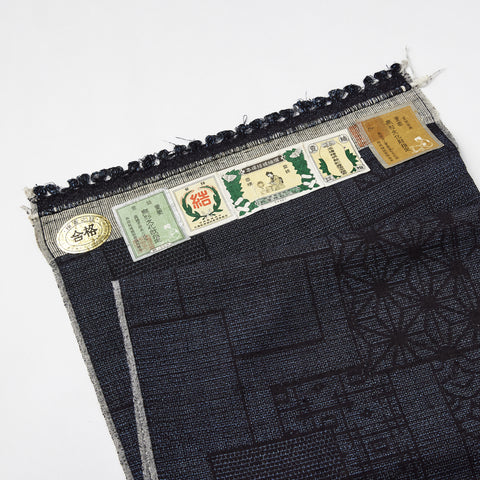
Honba Yuki Tsumugi (Jibata) - 100 Kikou Kasuri Irogami Kasane
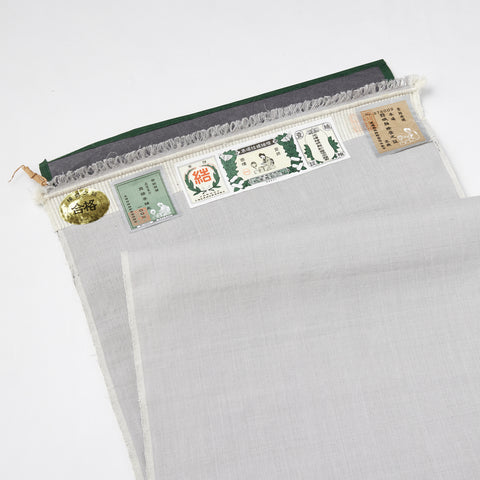
Yuki Tsumugi (Takabata) - Light Grey
The jibata loom is considered the oldest type of loom and is a requirement for any Honba Yuki Tsumugi to be designated as an Important Intangible Cultural Properties or registered as UNESCO Intangible Cultural Heritage. To weave fine and delicate kasuri threads with care, the backstrap loom is used because it is gentle on the threads and allows for easy adjustment of warp thread tension.

Another characteristic of fabrics woven on a jibata is the unique uneven texture that appears on the surface. To delve into a more technical aspect, in a takabata, two heddles move up and down simultaneously, allowing the warp threads to enclose the weft threads as they are woven. In contrast, the backstrap loom has only one heddle, causing the weft threads to wrap around the warp threads. This results in the weft threads being more prominently visible on the surface, creating a rich and textured fabric appearance.

Note the difference between the green Jibata label and the Orange Takabata Label on the bolt of fabric.
3.What is Honba Yuki-Chijimi (結城縮)?
Yuki Chijimi is a type of Yuki Tsumugi characterized by a crisp and refreshing texture achieved through the use of strongly twisted threads, which create a textured surface with fine ridges. It is designed to be enjoyed as an unlined kimono, worn in the warmer months(May & June, as well as September & October).
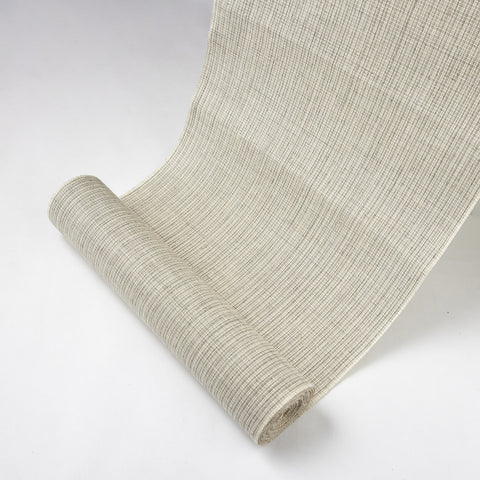
Yuki-Chijimi, Jibata, Kusakizome - Miniscule Plaid (Dyed using Alnus firma and Sumac Gallnut)
Though Yuki Tsumugi is famed for being light and warm, Yuki Chijimi is known for being light and breezy. Due to the unique crepe like texture, it is commonly tailored without a lining and worn in the warmer autumn months as well as the lead up to summer after the spring. Chijimi gained popularity in the Meiji and was popular until the late Showa era. Despite this, It is is made in extremely small quantities these days and faces extinction.

Thread Twisting Machine in motion. When twisting the threads, uniform thickness is crucial; otherwise, the tension concentrates on the thinner sections, causing them to break. As a result, the thread for Yuki Chijimi must be made a higher level of uniformity than those used in Yuki Tsumugi.
4.What is Honba Natsu-Yuki(本場夏結城)
Natsu-Yuki iss Yuki made originally for the summer. Recently summers in Japan are extremely hot, these kimono are often worn just before and just after the summer (in the hitoe period). Unlike regular Yuki, half of the weft threads are made of linen. This makes the fabric even lighter and slightly sheer.
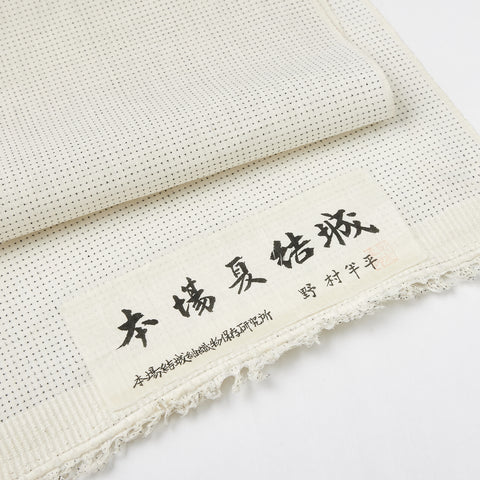
Honba Natsu-Yuki Jibata Silk & Linen -Kagasuri (蚊絣)
The character 蚊, Ka, means mosquito.
Natsu-Yuki is extremely rare, with an annual production of fewer than ten rolls, accounting for just 1-2% of all Yuki Tsumugi. It is produced in a single workshop, by the maker Nomura Hanpei.
About half of the warp and weft threads are made from the ultrafine, hand-spun silk (often reserved for 1600-kiko kasuri), with a slight twist added for strength. Additionally, roughly half of the weft threads incorporate fine linen thread, preserving the distinctive texture of Yūki Tsumugi while introducing a refreshing lightness and translucency. It is woven with the jibata loom. While Yūki Tsumugi is typically known for its warmth, this fabric defies convention, offering a groundbreaking alternative for warmer months.
5. What is Kusakizome (草木染) Yuki Tsumugi?
Despite the seemingly primitive techniques of hand-pulled threads and the traditional backstrap loom, many are surprised to learn that the Yuki textils rarely use natural dyes.
Since the Showa era, the refinement of kasuri patterns has reached a level that would be impossible to achieve without chemical dyes. Consequently, aside from a few instances of indigo dyeing, Yuki Tsumugi made with natural dyes has nearly disappeared.
After an era of pursuing unparalleled precision in kasuri patterns, the Reiwa era has brought forth a new generation of Yuki Tsumugi, where the elegant nuances of subtle colours are appreciated.
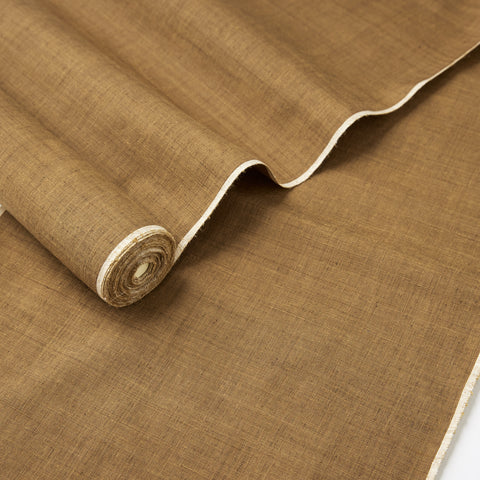
Kusakizome Honba Yuki Tsumugi - Jibata (Dyed with Chestnut, Yashabushi, and Betel Palm)
Take a look at our Kusakizome Yuki Tsumugi Collection
More about Honba Yuki Tsumugi
Movie: Yuya Shiokawa
Yuki Tsumugi, said to have derived its name from the efforts of the Yuki clan—local lords from the Kamakura to the Azuchi-Momoyama periods—to promote textile production, is currently made mainly in Yuki City, Ibaraki Prefecture. It spans approximately 20 kilometers along the Kinugawa River, crossing from Ibaraki into Tochigi Prefecture.
The traditional technique involves spinning floss silk—made by boiling cocoons, stretching them, and shaping them into bag-like forms—into thread without adding any twist, and then weaving it by hand. Textiles woven on a traditional backstrap loom (known as a jibata) were designated as an Important Intangible Cultural Property by the Japanese government in 1956. Furthermore, since fabric made with untwisted thread is extremely rare worldwide, Yuki Tsumugi was inscribed on the UNESCO Representative List of the Intangible Cultural Heritage of Humanity in 2010 for its cultural and technical value.
Because the thread traps a great deal of air, the fabric is warm and features a soft, fluffy texture, offering a gentle, enveloping feel when worn. The more you wear it, the more it conforms to your skin, allowing you to fully appreciate the evolving character of the textile over many years.
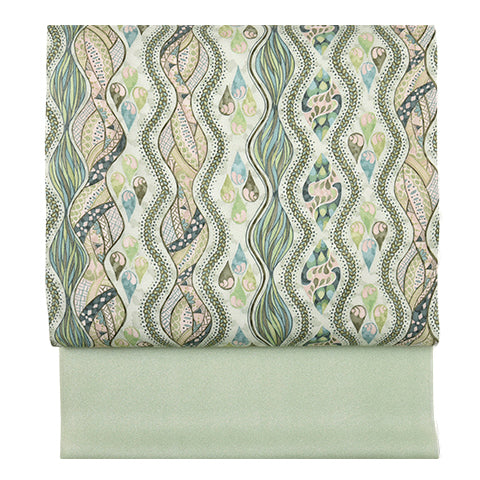 名古屋帯
名古屋帯
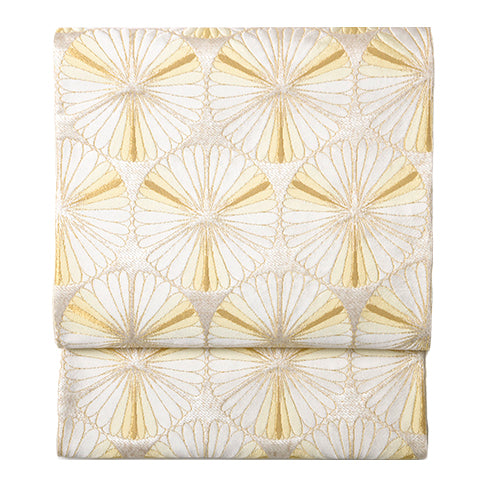 袋帯
袋帯
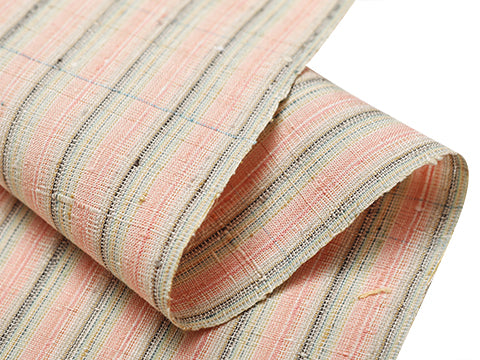 紬・綿・自然布
紬・綿・自然布
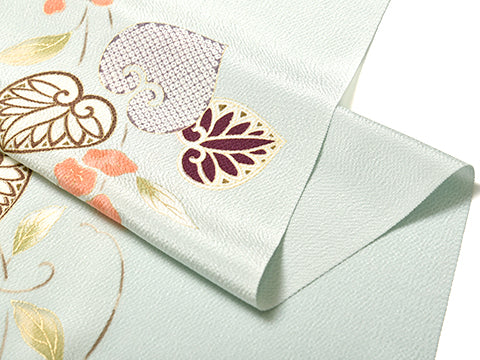 小紋・江戸小紋
小紋・江戸小紋
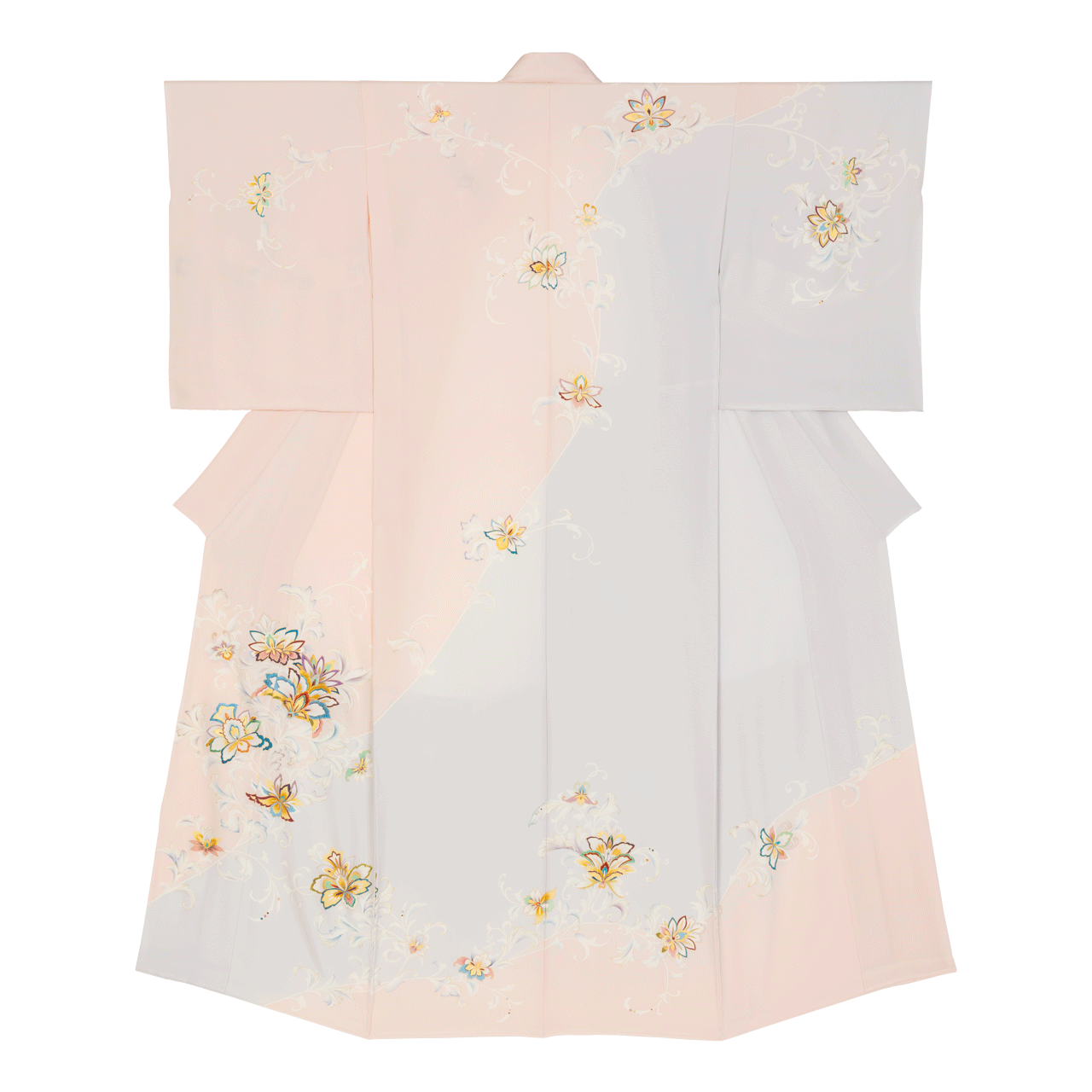 訪問着・付下げ・色無地ほか
訪問着・付下げ・色無地ほか
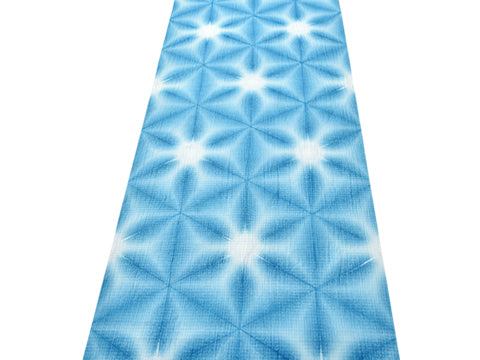 浴衣・半巾帯
浴衣・半巾帯
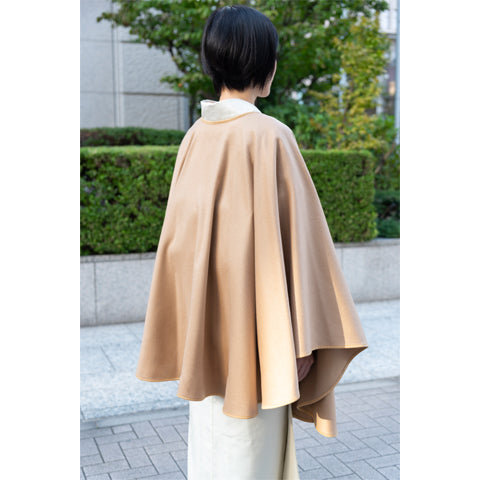 羽織・コート
羽織・コート
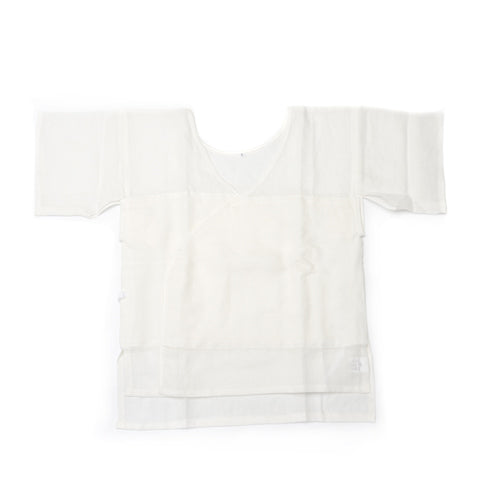 肌着
肌着
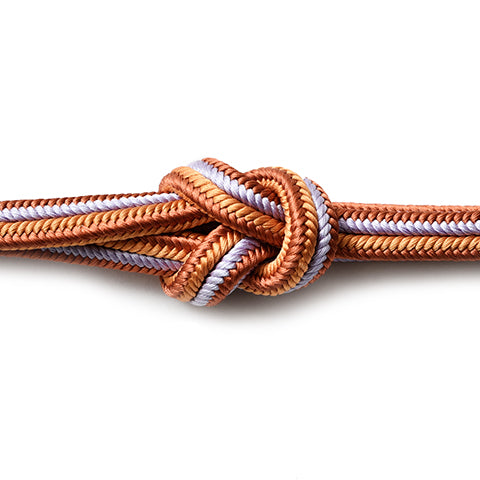 小物
小物
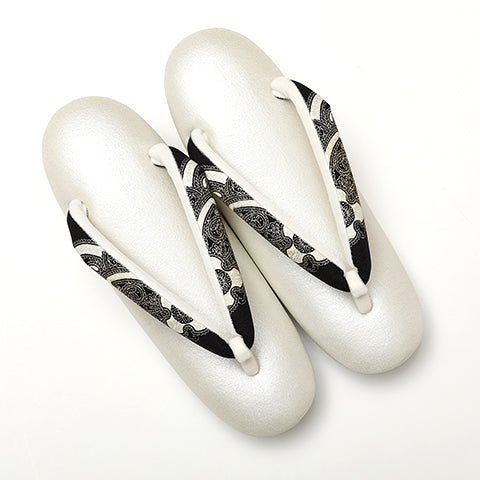 履物
履物
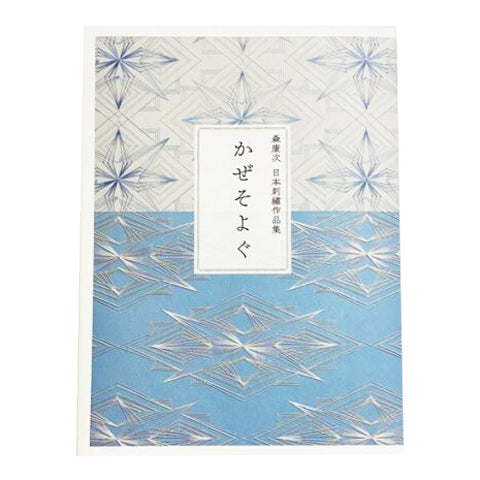 書籍
書籍
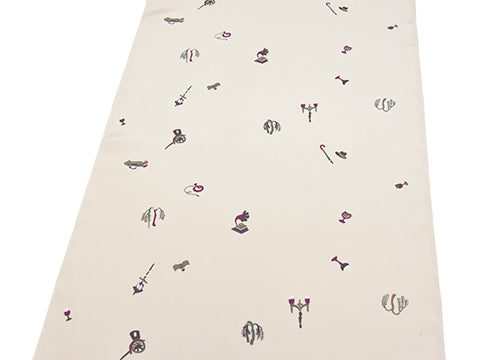 長襦袢
長襦袢
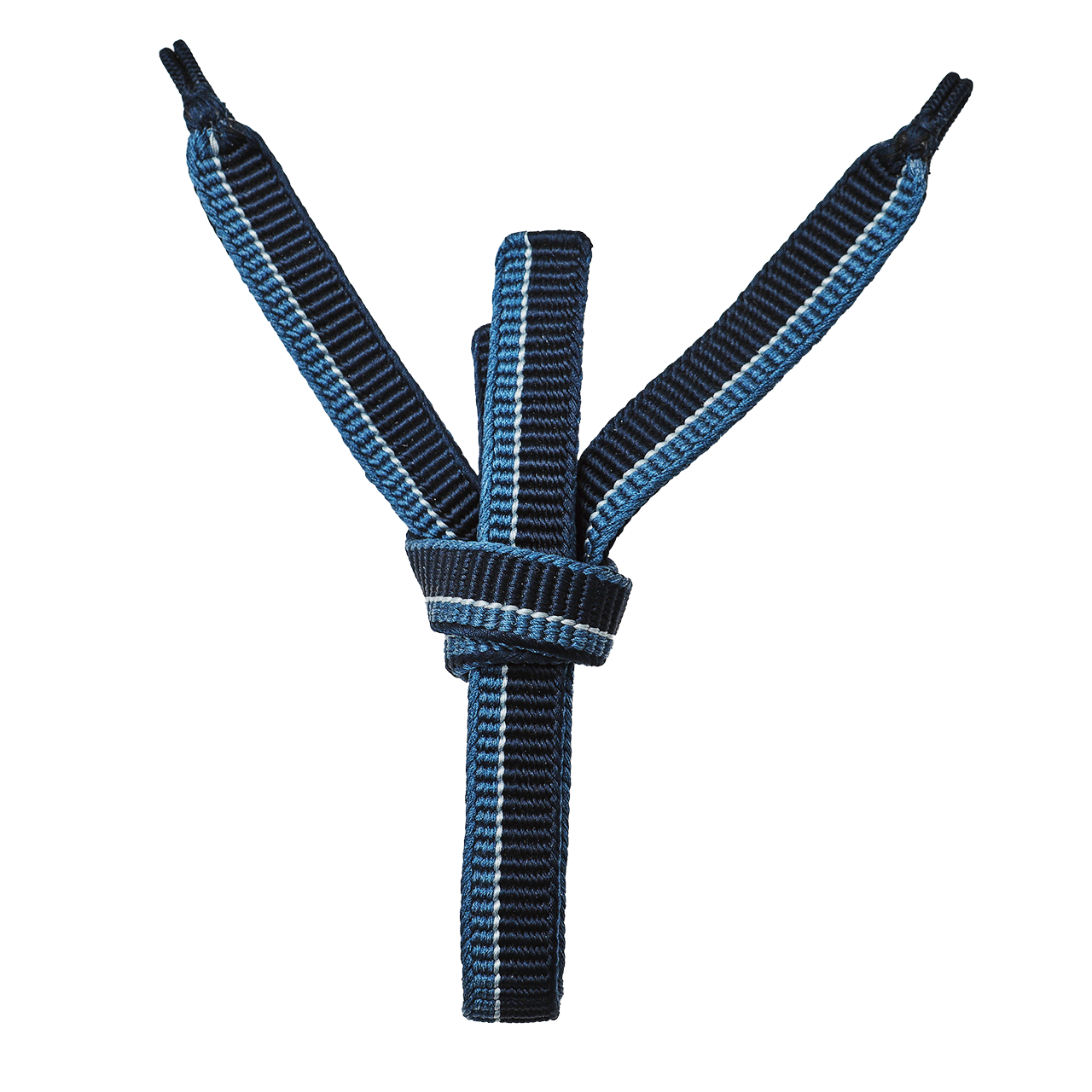 小物
小物
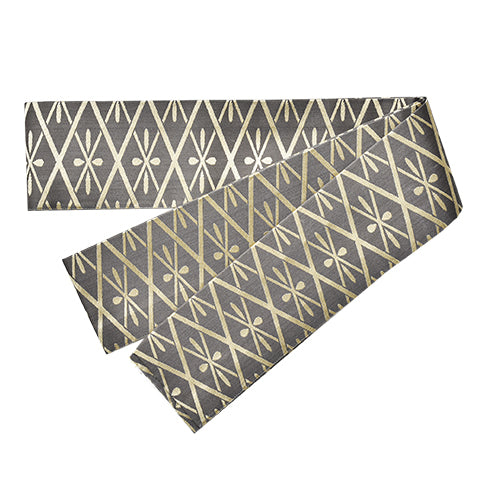 帯
帯
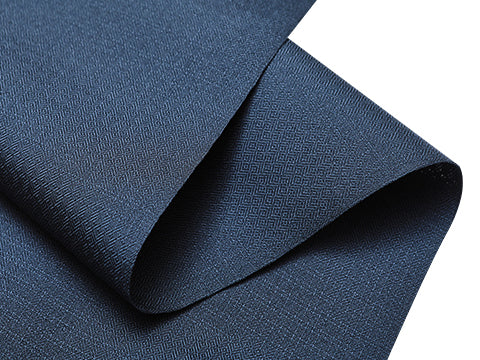 お召
お召
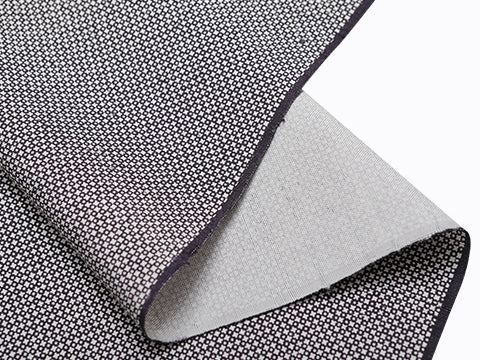 小紋・江戸小紋
小紋・江戸小紋
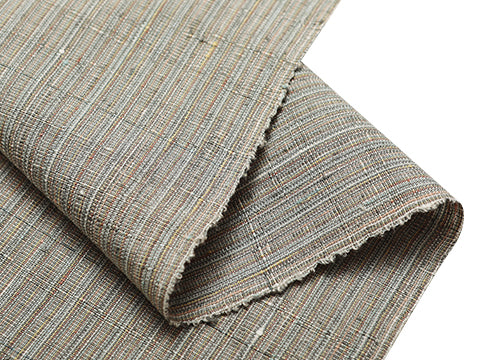 紬・綿・自然布
紬・綿・自然布
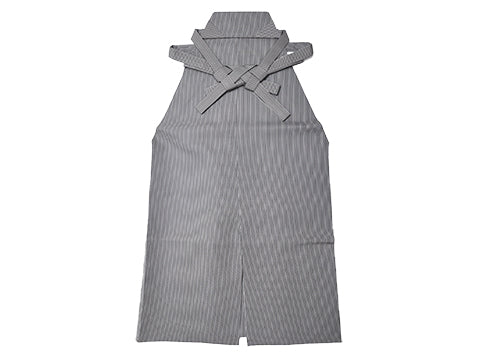 袴
袴
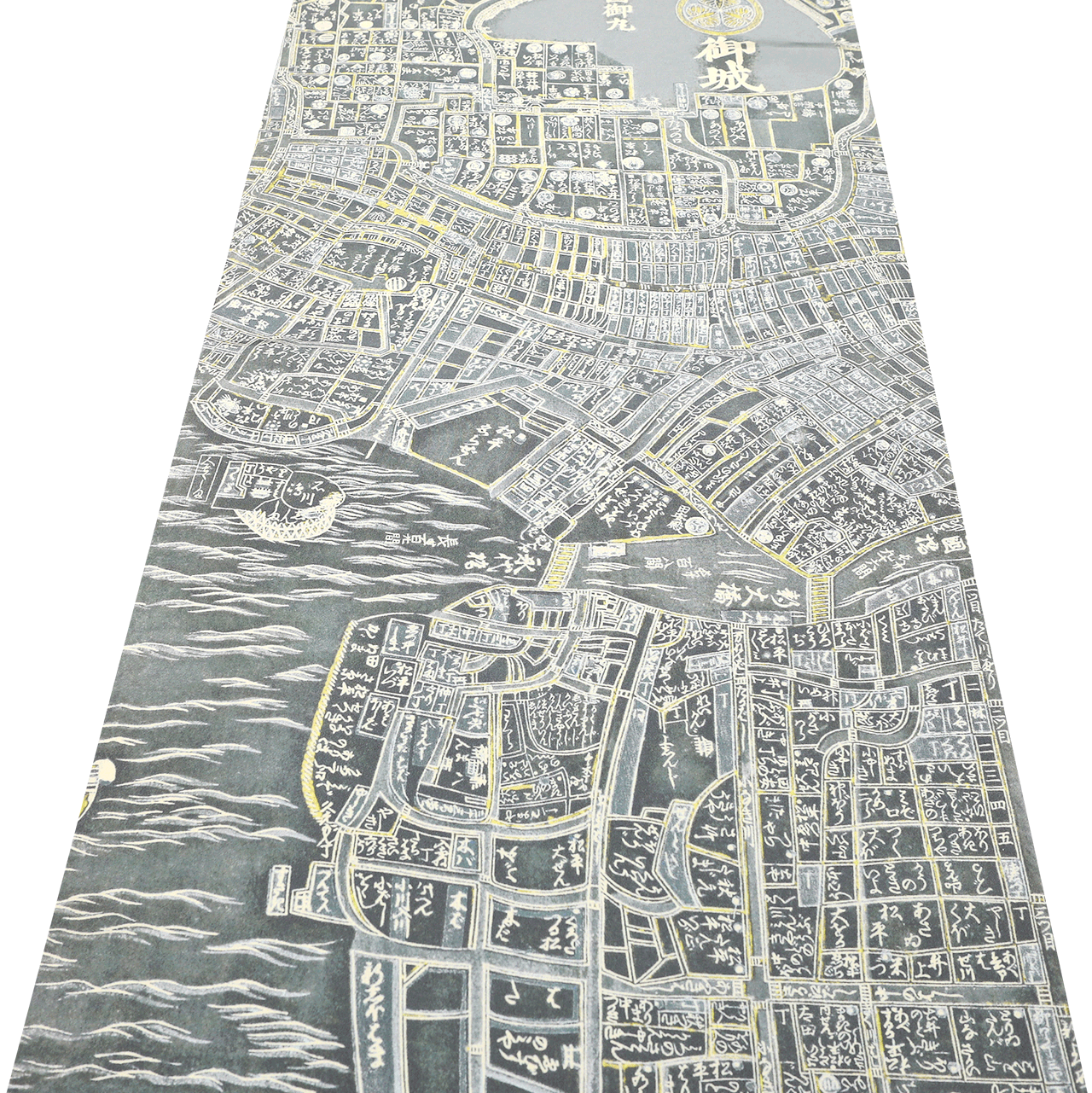 長襦袢
長襦袢
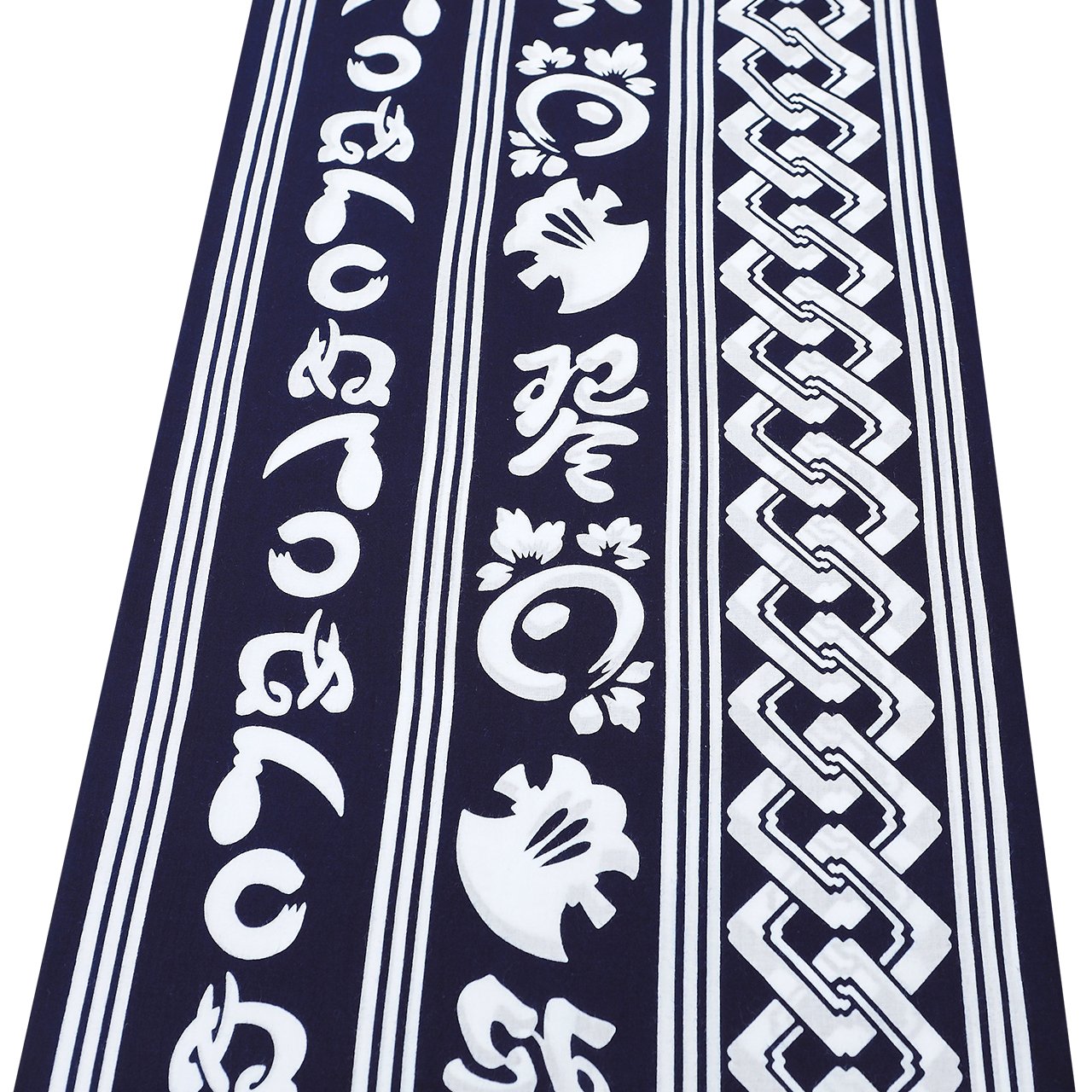 浴衣
浴衣
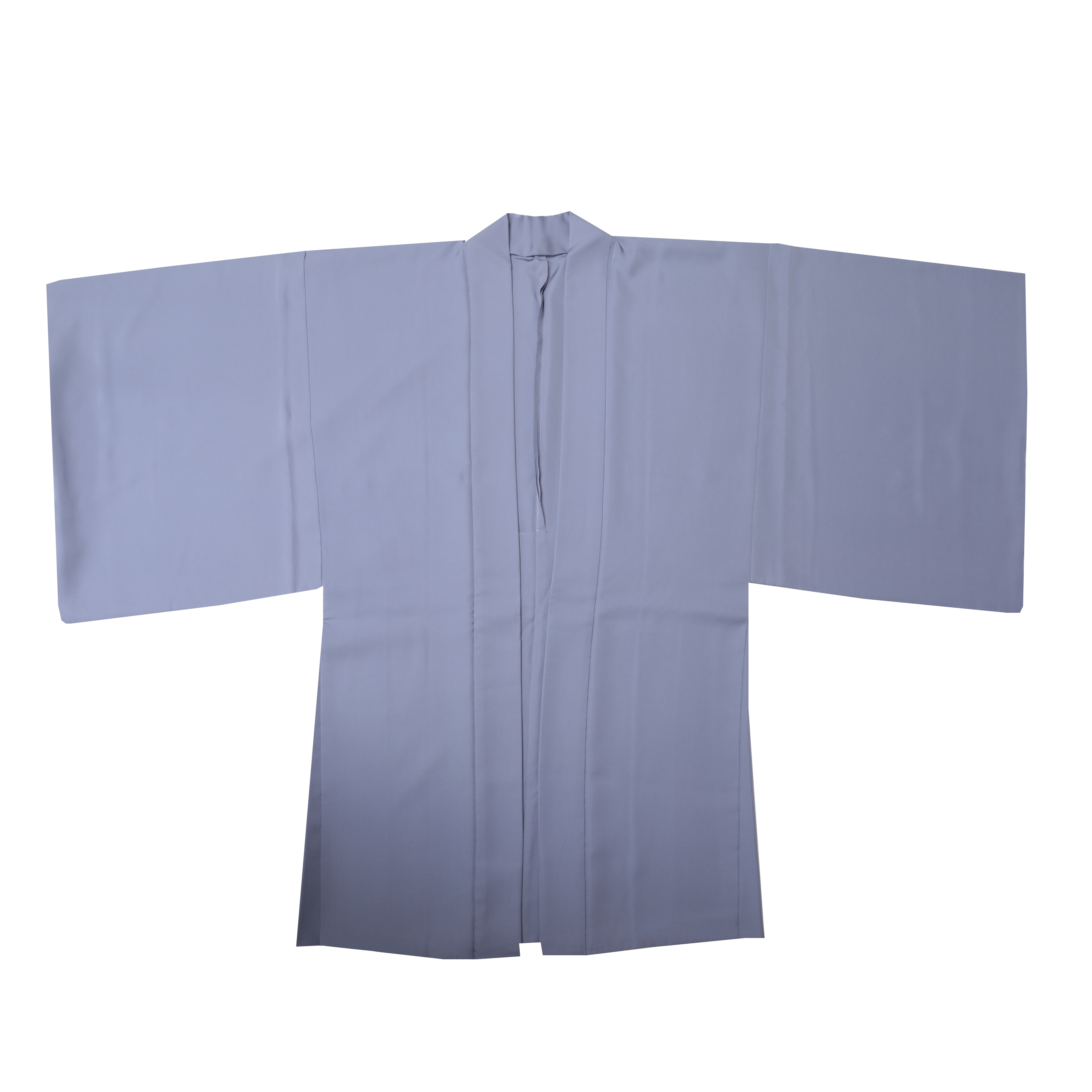 羽織・コート
羽織・コート
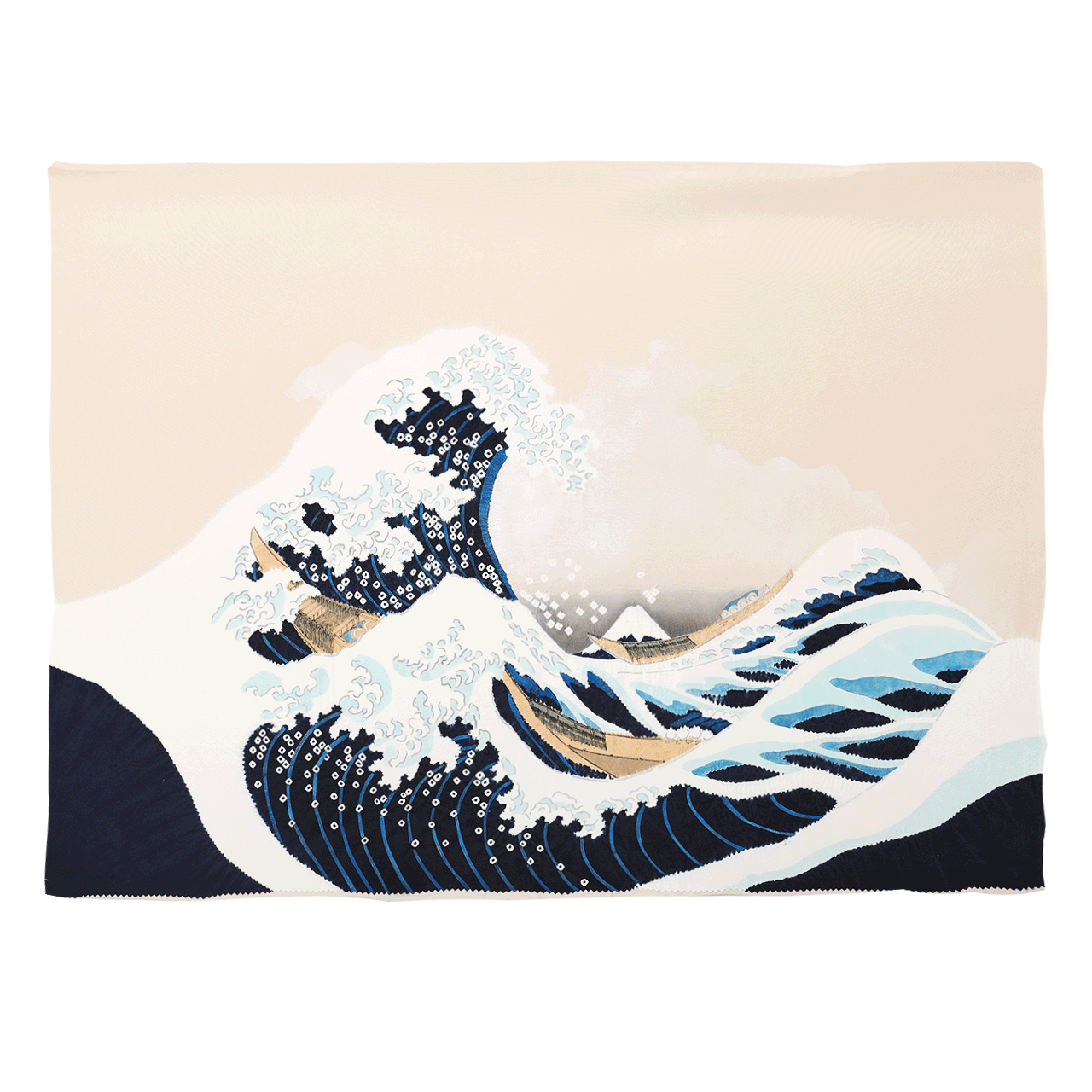 額裏
額裏
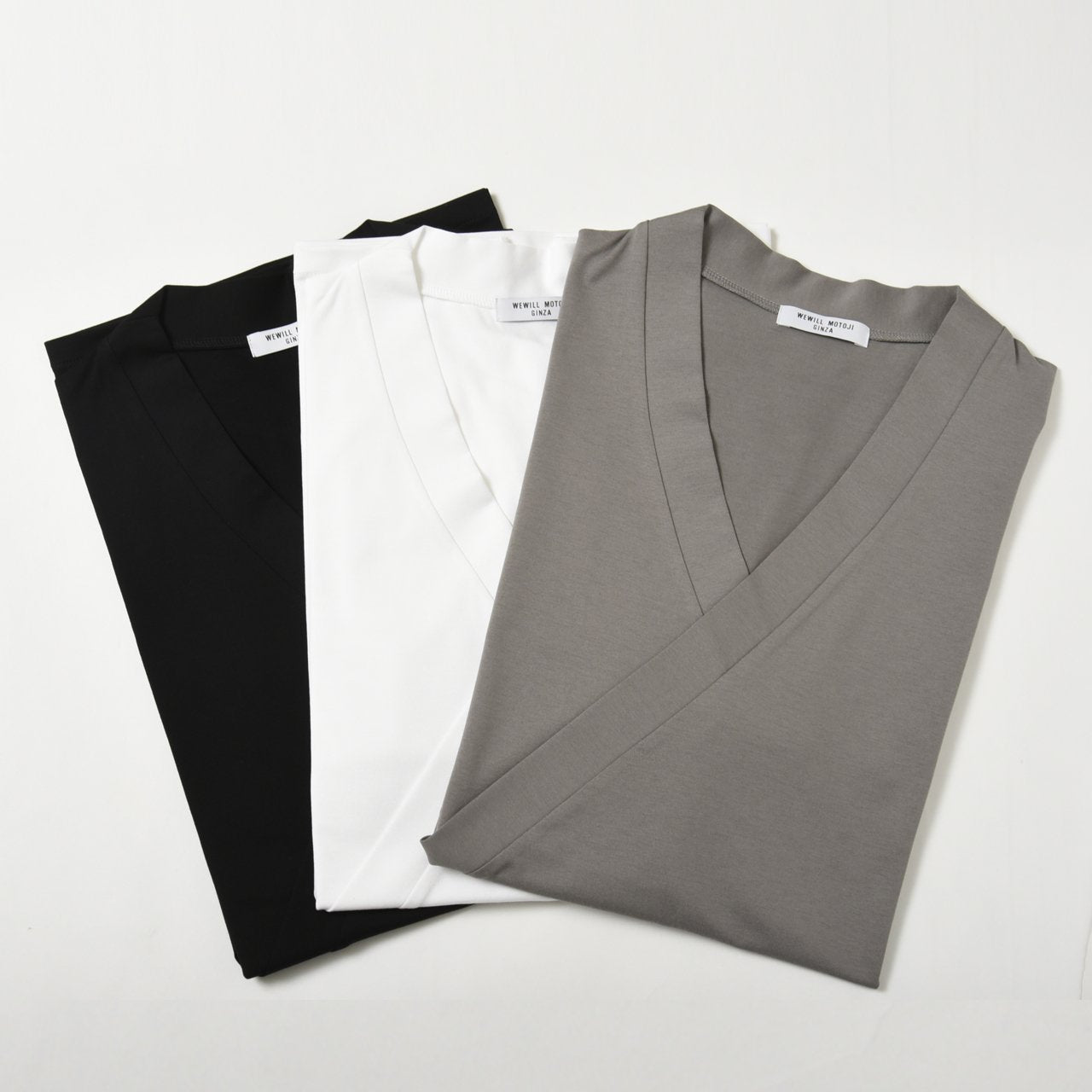 肌着
肌着
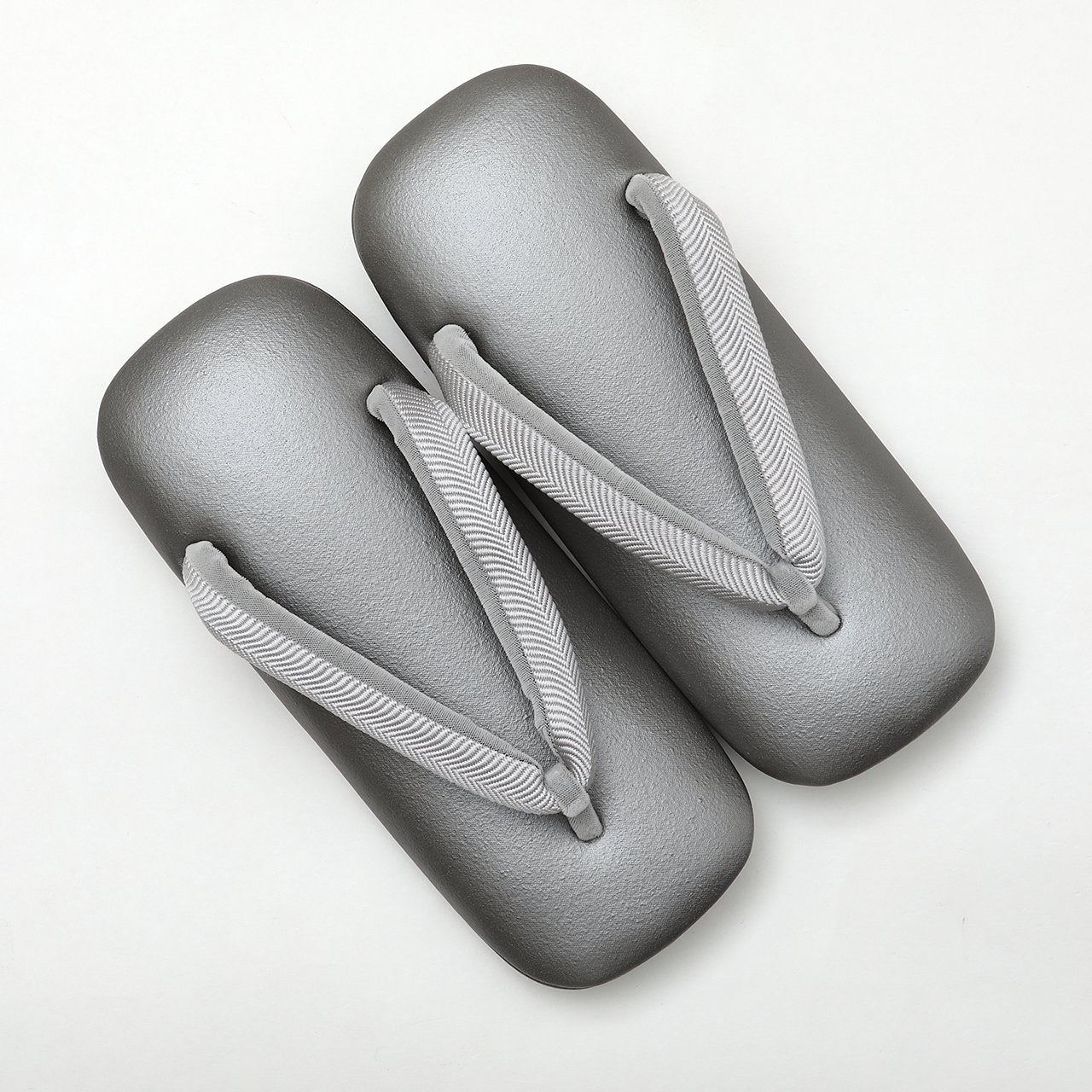 履物
履物
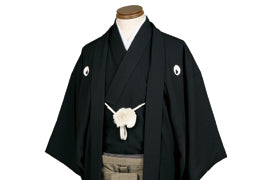 紋付
紋付
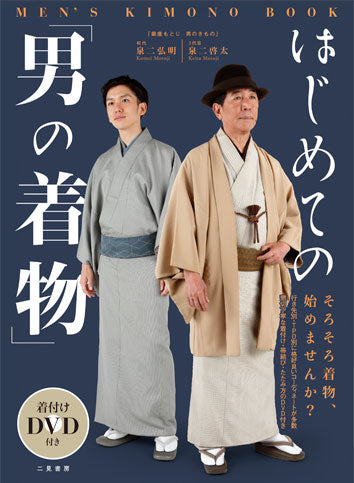 書籍
書籍
